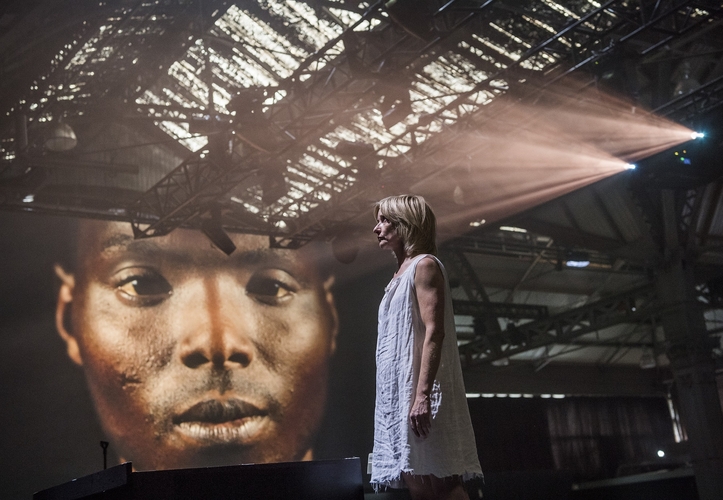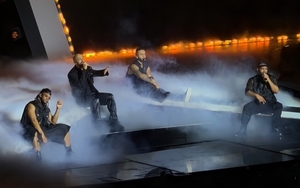Heavy metal gig, theatre performance, history lesson? Vicky Smith on a show trying to be too many things at once
***
It’s a testament to Jane Horrocks’ power as an actress that she can crotch thrust, loudspeaker in hand, and still appear strangely dignified. Bizarre scenes like this abound but - whether waving the American flag around her head like a Full Monty stripper, or dancing like a puppet pulled every which way - the confidence she conveys in Cotton Panic somehow carries them off.
The MIF premiere, directed by Wils Wilson, continues until Saturday and tells of the catastrophe that befell the North during the 1861 cotton famine; when the US Civil War took root, American ports fell silent and cotton supplies dried up. As the literal fabric of Manchester’s economy during the Industrial revolution, this was a devastating blow.
Perhaps as a consequence, Cotton Panic isn’t an easy performance: as we stood around a sparse black stage in the smoky dark, music throbbing through our veins (one woman almost fainted), it felt at times more like a heavy metal gig than a theatre performance.
The music genre is more electronic, and undeniably well-composed by Wrangler. Neither is the performance just theatre: the music aspect is arguably as prominent as the drama, poetry, dance and film.
In other words, Cotton Panic is a hybrid, and a one-woman hybrid at that: Horrocks is occasionally joined by a talented clogged dancer, and the sound/visual team are visible through a thin gauze curtain, but otherwise she is alone. These are both risks that are successful to an extent, but rely overly on sensationalism. As entertaining as it is to see Horrocks prancing around onstage with her trusty loudspeaker, the sheer force of the music often drowns out any meaning and I would have preferred to be given some historical context - rather than nonsensical graphics - in the pamphlets handed out at the end.
That’s not to say there aren’t positives, from the lyrical script to the clever use of tap dancing to symbolise the ‘clattering din’ of mill workers’ clogs. I also found the metaphors worked well: the disembodied movements to reflect broken lives, the depictions of present-day factory workers to highlight the insidious nature of slavery, the morphing of one West Indian man’s face into many others to represent all those implicated during the cotton boom.
From the drudgery of the mills, to the identity loss nevertheless felt by workers when they closed, Horrocks does well to convey a story with many complexities. Whether singing mournfully or joining an anti-slavery protest by the Free Trade Hall, encumbered by clogs or fettered by poverty, we feel the stark reality faced by her character. The use of quotes from the likes of Karl Marx and Abraham Lincoln also help to add context, as do the striking visuals: from heavy chains to ethereal drifts of cotton.
From what I’d heard about Cotton Panic, I expected marmite - something I’d love or hate. Ultimately I felt a bit of both.
Cotton Panic, Upper Campfield Market Hall, 8-15 July.
Main images: Tristam Kenton















